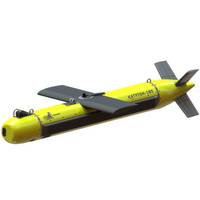
Kraken Robotics Supplies High-Resolution Seabed Mapping Sonar Solution to Australian Navy
Canadian marine robotics company Kraken Robotics said Monday it had supplied high-resolution seabed mapping sonar equipment to the Royal Australian Navy. Kraken delivered its KATFISH high-speed high-definition seabed awareness solution in Q2, and recently completed system integration and sea trials in Cairns, Australia. Kraken expects to provide additional in-service support including training, spares and operational support. "Continuing to build off successful KATFISH deliveries with various NATO navies, this represented Kraken’s first KATFISH system sale in the Asia-Pacific
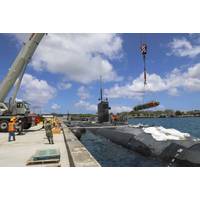
In the Navy:The Role of Advanced Sea Mines in Future Conflicts
, viable sea denial capability in the face of growing threats from Russia and China. Italian company RMV Italia, for example, a division of German auto and arms manufacturer Rheinmetall, markets the Murena and Asteria bottom mines, and is rumored to be a possible future supplier to the Royal Australian Navy as Canberra seeks to deter Chinese maritime aggression. Finnish company DA-Group produces an advanced bottom mine, the Turso MM20, which can be fitted with a range of sensors, and operates at depths of 10 to 200 meters. DA-Group also markets a modular minelaying system called Sumico, which
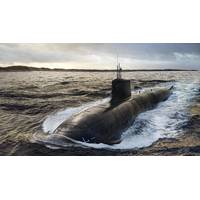
Australia Outlines $245 Billion Nuclear Submarine Plan
program would start with a A$6 billion ($4 billion) investment over the next four years to expand a major submarine base and the country's submarine shipyards, as well as train skilled workers."This will be an Australian sovereign capability - built by Australians, commanded by the Royal Australian Navy and sustained by Australian workers in Australian shipyards," Albanese said in San Diego, California."The scale, complexity and economic significance of the investment is akin to the creation of the Australian automotive industry in the post-war period," Albanese added.Australia
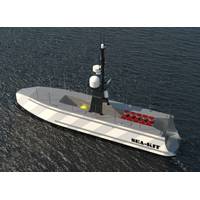
MTR100: For USVs and AUVs, is it a Hydrogen Future?
LR underwater.Developing a hydrogen powered AUV has also been a goal for Canada’s Cellula Robotics – and this summer it got its system into the water. Its goal is to get to 2,000 km endurance with its hydrogen fuel cell powered Solus-LR vehicle. Cellula’s SeaWolf project, with the Australian navy (also called Solus XR), is even bigger (12m-long) and with more oxygen and hydrogen, and targeting 5,000km.Earlier this year, the company performed its first endurance pool tests on its fuel cell. It ran for more than three days without any issues. Then, in July, it took its 8.5m-long Solus-LR
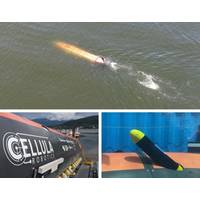
Hydrogen Fuel Cell Powered AUV Demonstrated
message to Solus-LR's command and control center via Iridium satellite. The operation was the first of its kind and demonstrated near real-time, over-the-horizon communications from a submerged AUV.The demonstration was observed by representatives from Trusted Autonomous Systems (TAS), the Royal Australian Navy, Royal Canadian Navy, Defense Research Development Canada (DRDC), Defense Science & Technology Group (DSTG Australia) and the Minister of State for Trade, Vancouver-Fraserview, George Chow, as part of Cellula's ongoing work with TAS' SeaWolf program. TAS is Australia's first
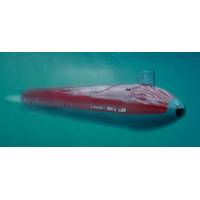
XLUUV: If You Build It, They Will Buy
In August, 2021, after years of delays, cost overruns, and rising tensions, the Australian government canceled a A$90 billion order with France’s Naval Group for 12 conventionally powered submarines intended to replace the Royal Australian Navy (RAN)’s aging fleet of six Collins-class attack subs. Overnight, the future of the RAN’s undersea warfare capability was cast into uncertainty. The very next month, however, the United States and the United Kingdom announced a plan to help Australia fill the void, offering to assist in the design, development, and construction of a new fleet
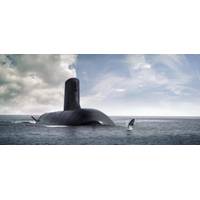
Does Australia Need ‘Interim’ Submarines to Tide It Over Until Nuclear Boats Arrive?
Last year experts raised their eyebrows when the Morrison government announced Australia would abandon its contract for French-built Attack class submarines, in favor of eight nuclear-powered submarines delivered under the AUKUS partnership.Retired Royal Australian Navy Chief Petty Officer Greg Jones was one key individual who questioned whether the choice is appropriate for Australia’s defense needs (at least in the short to medium term).One particularly controversial point is the time it will take for the nuclear submarines to become operational. Most estimates indicate they won’t enter
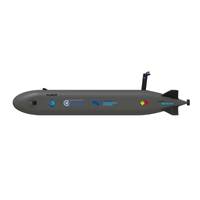
Cellula Robotics, Trusted Autonomous Systems Developing Fuel-cell Powered XLUUV for Australian Navy
Cellula Robotics said Thursday it was six months into a contract with Trusted Autonomous Systems (TAS), to develop the next generation of fuel cell powered, Extra-Large Unmanned Underwater Vehicle (XLUUV). "Funded by the Royal Australian Navy (RAN) and in collaboration with sovereign sub-contractors, project SeaWolf is set to debut the first 12m XLUUV hull in the fourth quarter of 2022," Cellula Robotics said.Cellula said that some notable features of the SeaWolf project include a mission range of over 5,000 kms powered by a fuel cell power system and two modular 2,500 liter flooded
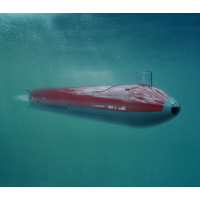
Anduril to Build Extra Large AUVs for Royal Australian Navy
Defense technology company Anduril Industries has entered into commercial negotiations with the Australian Defence Force for a US$100 million co-funded design, development, and manufacturing program for Extra Large Autonomous Undersea Vehicles (XL-AUVs) for the Royal Australian Navy.According to Anduril, the XL-AUV will be an affordable, autonomous, long-endurance, multi-mission capable AUV. "It is modular, customizable, and can be optimized with a variety of payloads for a wide range of military and non-military missions such as advanced intelligence, infrastructure inspection,


 February 2024
February 2024





